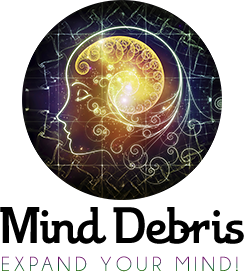Ayahuasca Brain: The Neuroscience of Ayahuasca
[Please note that this page contains affiliate links. If you choose to purchase after clicking a link, I may receive a commission at no extra cost to you.]
Tribes in South America have used Ayahuasca as a spiritual ritualistic healing mechanism. It has become more prevalent in North America for auditory and optic hallucinations.
Ayahuasca is made through the leaves of one tree and the vines of another, neither of which produce any hallucinogenic effects on their own.
The Neuroscience of Ayahuasca
Although, the leaves do contain DMT which is structurally similar to the neurotransmitter serotonin and psilocybin, the active ingredient in magic mushrooms.
The issue is that your gut enzymes deactivate the DMT before allowing it to enter the bloodstream. This is where the Ayahuasca vine role comes into play. As they inhibit your gut enzymes from working correctly, the vine allows the DMT to travel through the blood-brain barrier.
The effects of the tea take hold of the person about 30 minutes after taking the psychedelic. The hallucinations peak after about one hour, and it lasts on average four to six hours.
Hallucinations are very different from other drugs like magic mushrooms or LSD. In that, people are fully aware that they are hallucinating visually well under the influence of it.
In addition, instead of hearing voices, the sounds are usually heard just picking up sounds from things going on around them. Unlike those who consume psilocybin or LSD on an excellent trip, many who try Ayahuasca seek to reconcile past traumas or understand certain emotions and memories.
Afterwards, people are more at ease with their thoughts and emotions and more accepting of their situations.
The default mode network is an area of the brain that, if it is overactive, can lead to anxiety, depression, and social anxiety.
Ayahuasca Science
fMRI brain scans show that those who took it caused a significant reduction in activity in the default mode network. This is typically linked to a meditative state and explains why some under Ayahuasca feel at peace and find a renewed sense of purpose after experiencing it.
Furthermore, it is linked to creating proteins that promote the maintenance of long-term memory, neuroplasticity, and neurogenesis – the growth of new brain cells.
DMT binds to specific receptors found on mitochondria and endoplasmic reticulum, and it might even have the potential to kill specific cancerous cells.
Alkaloids from the Ayahuasca vine have been shown to kill various cancer cells in mice and liver cancer cells in humans.
DMT
This is not an endorsement to replace radiation or chemotherapy, but it may hold future possibilities for cancer research.
Additionally, other drugs such as cocaine or alcohol create a tolerance over time, whereas Ayahuasca does not.
After taking Ayahuasca, users may violently puke and have explosive diarrhea as the tea is exceptionally acidic, making an upset stomach a normalized side effect in even the most experienced users.
There is also a dark side to Ayahuasca as there have been fatalities linked to Ayahuasca, but the manner of death is often undetermined.
As popularity rises for Ayahuasca, as do the number of fake shamans creating fake Ayahuasca, so beware if you travel to South America to try it out.


